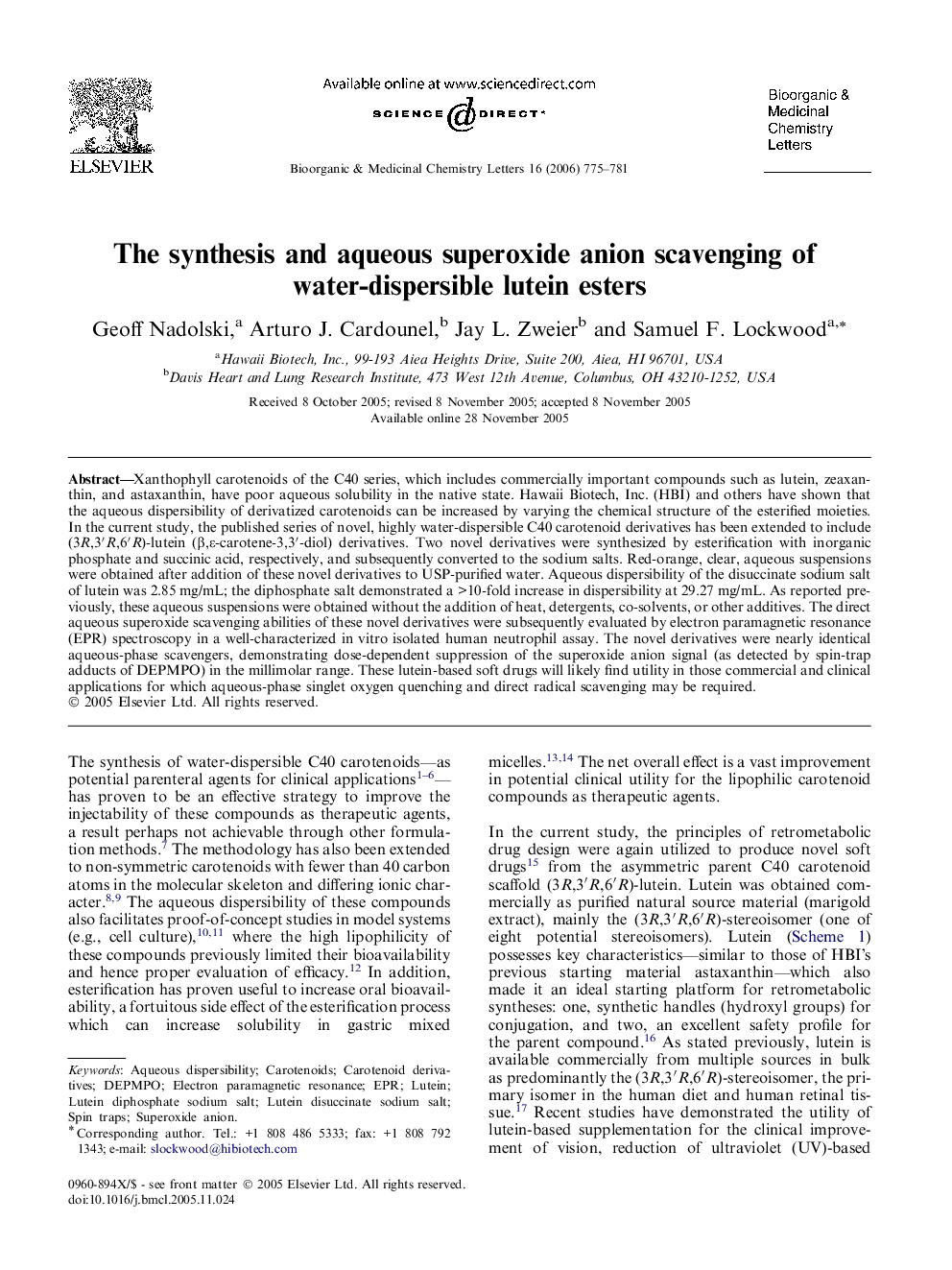| Article ID | Journal | Published Year | Pages | File Type |
|---|---|---|---|---|
| 1379221 | Bioorganic & Medicinal Chemistry Letters | 2006 | 7 Pages |
Xanthophyll carotenoids of the C40 series, which includes commercially important compounds such as lutein, zeaxanthin, and astaxanthin, have poor aqueous solubility in the native state. Hawaii Biotech, Inc. (HBI) and others have shown that the aqueous dispersibility of derivatized carotenoids can be increased by varying the chemical structure of the esterified moieties. In the current study, the published series of novel, highly water-dispersible C40 carotenoid derivatives has been extended to include (3R,3′R,6′R)-lutein (β,ε-carotene-3,3′-diol) derivatives. Two novel derivatives were synthesized by esterification with inorganic phosphate and succinic acid, respectively, and subsequently converted to the sodium salts. Red-orange, clear, aqueous suspensions were obtained after addition of these novel derivatives to USP-purified water. Aqueous dispersibility of the disuccinate sodium salt of lutein was 2.85 mg/mL; the diphosphate salt demonstrated a >10-fold increase in dispersibility at 29.27 mg/mL. As reported previously, these aqueous suspensions were obtained without the addition of heat, detergents, co-solvents, or other additives. The direct aqueous superoxide scavenging abilities of these novel derivatives were subsequently evaluated by electron paramagnetic resonance (EPR) spectroscopy in a well-characterized in vitro isolated human neutrophil assay. The novel derivatives were nearly identical aqueous-phase scavengers, demonstrating dose-dependent suppression of the superoxide anion signal (as detected by spin-trap adducts of DEPMPO) in the millimolar range. These lutein-based soft drugs will likely find utility in those commercial and clinical applications for which aqueous-phase singlet oxygen quenching and direct radical scavenging may be required.
Graphical abstractNovel water-dispersible lutein esters were prepared, which demonstrated potent, direct superoxide scavenging ability in an in vitro isolated human neutrophil assay.Figure optionsDownload full-size imageDownload as PowerPoint slide
